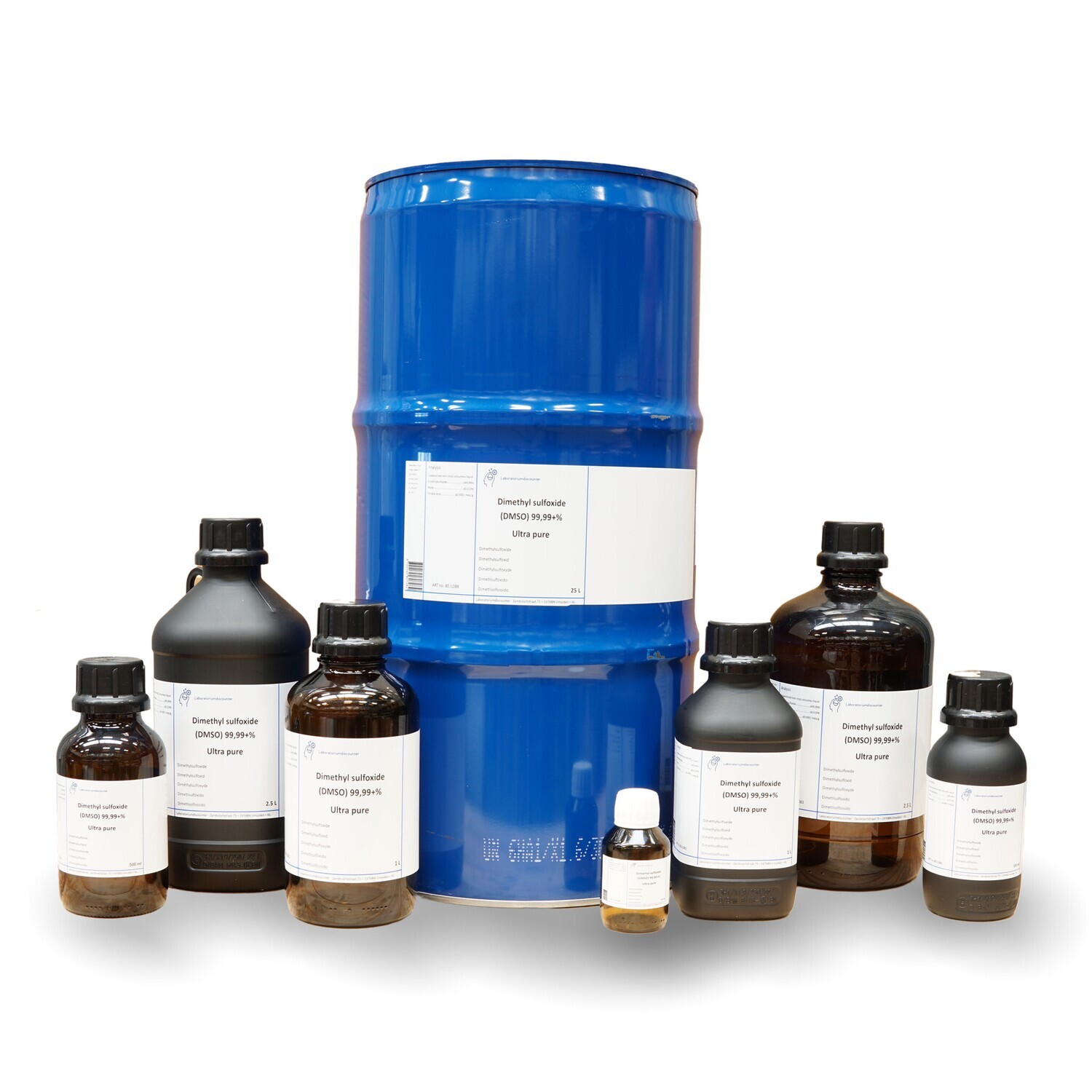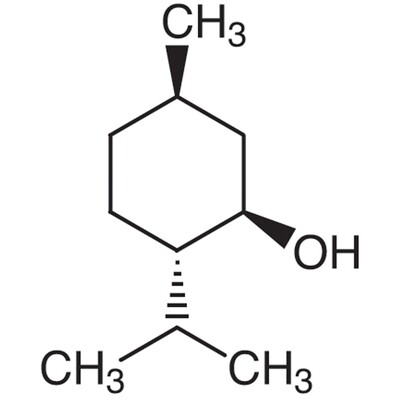Dimethyl sulfoxide (DMSO) 99,9+% ultrapure 2.5 Liter Verpakking bruin glas
Dimethylsulfoxide (DMSO) is an organic connection that is frequently used in various applications, including the pharmaceutical, medical and industrial sector. It is mainly used as a solvent, but also has anti -inflammatory and analgesic properties.
DMSO is often used in the pharmaceutical industry as a solvent for solving medicines. It has the ability to penetrate the skin and cell membranes, making it an effective carrier for transporting medicines to specific parts of the body. This makes it a valuable tool for the development of medicines and improving the absorption of medicines.
In addition, DMSO is also used in the medical sector for the treatment of various disorders. It has anti-inflammatory properties and can be used to reduce pain and swelling in disorders such as arthritis, muscle and joint pain. It can also be used as a local agent for the treatment of burns and wounds, because it can promote healing and reduce the formation of scar tissue.
Although DMSO has many advantages, it is important to observe safety instructions when using them. Firstly, DMSO must always be used in a well -ventilated space, because it has a strong scent and can release vapors that can cause irritation to the airways. It is also important to avoid contact with the skin and eyes, because it can cause irritation. When contact with the skin, it must be thoroughly washed with soap and water.
Moreover, DMSO should not be used in people with a well -known allergy or hypersensitivity to the material. It can also interact with certain medicines, so it is important to consult a doctor before using DMSO in combination with other medicines.
In conclusion, dimethyl sulfoxide (DMSO) is a versatile connection that is used in various industries because of its solvent capacities and anti -inflammatory properties. It is used in the pharmaceutical industry for solving medicines and in the medical sector for the treatment of inflammation and pain. However, it is important to follow safety instructions in the use of DMSO to prevent possible irritation and interactions with other medicines.
Note: The text and danger designation are only intended as an example and should not be considered the actual information. Lab-O-Rama accepts no liability for the incorrect use of this information or the consequences thereof. For accurate and specific information, users must consult the Material Safety Data Sheet (MSDS) that is automatically provided after the successful placement of an order, can be downloaded or requested through our customer service. You must always adhere to national and international regulations for the correct application of a substance.
P sentences:
- P210: Keeping heat/sparks/open fire/hot surfaces. Not smoking.
- P261: inhalation of dust/smoke/Gas/hole/vapor/spray mist avoid.
- P280: Protective gloves/protective clothing/eye protection/facial protection.
- P303+P361+P353: When contact with the skin (or the hair): pull out contaminated clothing immediately. Rinse your skin with water.
- P304+P340: After inhalation: bring the victim into the fresh air and rest in an position that facilitates breathing.
- P305+P351+P338: When eyes contact: gently rinse with water for a few minutes. Remove contact lenses if possible. Keep rinsing.
- P403+P233: Store in a well-ventilated place. Save in well closed packaging.
H-sentences:
- H302: harmful when swallowing.
- H315: causes skin irritation.
- H319: causes serious eye irritation.
- H335: can cause airways irritation.
- H360: can harm the fertility or the unborn child.
- H373: Can cause damage to organs in long-term or repeated exposure.
- H400: very toxic for organisms living in the water.
- H410: very toxic for organisms living in the water, with long-term consequences.








![3-Trifluoromethylpyrrolo[2,3-b]pyridine, 97.0%, 1g 3-Trifluoromethylpyrrolo[2,3-b]pyridine, 97.0%, 1g](https://d2j6dbq0eux0bg.cloudfront.net/images/88473019/4861018457.png)




